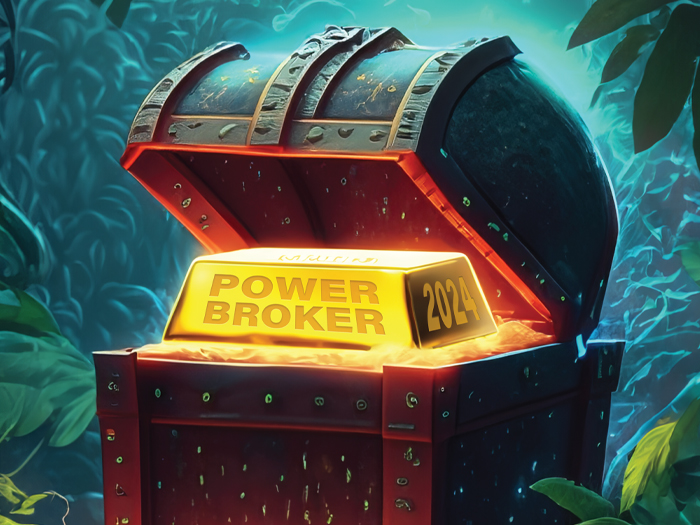Sponsored Content by Chubb
Electronic Waste Risks Piling Up

The latest electronic devices today may be obsolete by tomorrow. Outdated electronics pose a rapidly growing problem for risk managers. Telecommunications equipment, computers, printers, copiers, mobile devices and other electronics often contain toxic metals such as mercury and lead. Improper disposal of this electronic waste not only harms the environment, it can lead to heavy fines and reputation-damaging publicity.
Federal and state regulators are increasingly concerned about e-waste. Settlements in improper disposal cases have reached into the millions of dollars. Fines aren’t the only risk. Sensitive data inadvertently left on discarded equipment can lead to data breaches.
To avoid potentially serious claims and legal action, risk managers need to understand the risks of e-waste and to develop a strategy for recycling and disposal that complies with local, state and federal regulations.
The Risks Are Rising
E-waste has been piling up at a rate that’s two to three times faster than any other waste stream, according to U.S Environmental Protection Agency estimates. Any product that contains electronic circuitry can eventually become e-waste, and the range of products with embedded electronics grows every day. Because of the toxic materials involved, special care must be taken in disposing of unwanted equipment. Broken devices can leach hazardous materials into the ground and water, creating health risks on the site and neighboring properties.
Despite the environmental dangers, much of our outdated electronics still end up in landfills. Only about 40 percent of consumer electronics were recycled in 2013, according to the EPA. Yet for every million cellphones that are recycled, the EPA estimates that about 35,000 pounds of copper, 772 pounds of silver, 75 pounds of gold and 33 pounds of palladium can be recovered.
While consumers may bring unwanted electronics to local collection sites, corporations must comply with stringent guidelines. The waste must be disposed of properly using vendors with the requisite expertise, certifications and permits. The risk doesn’t end when e-waste is turned over to a disposal vendor. Liabilities for contamination can extend back from the disposal site to the company that discarded the equipment.
Reuse and Recycle
To cut down on e-waste, more companies are seeking to adapt older equipment for reuse. New products feature designs that make it easier to recycle materials and to remove heavy metals for reuse. These strategies conserve valuable resources, reduce the amount of waste and lessen the amount of new equipment that must be purchased.
Effective risk management should focus on minimizing waste, reusing and recycling electronics, managing disposal and complying with regulations at all levels.
For equipment that cannot be reused, companies should work with a disposal vendor that can make sure that their data is protected and that all the applicable environmental regulations are met. Vendors should present evidence of the required permits and certifications. Companies seeking disposal vendors may want to look for two voluntary certifications: the Responsible Recycling (R2) Standard, and the e-Stewards certification.
The U.S. EPA also provides guidance and technical support for firms seeking to implement best practices for e-waste. Under EPA rules for the disposal of items such as batteries, mercury-containing equipment and lamps, e-waste waste typically falls under the category of “universal waste.”
About half the states have enacted their own e-waste laws, and companies that do business in multiple states may have to comply with varying regulations that cover a wider list of materials. Some materials may require handling as hazardous waste according to federal, state and local requirements. U.S. businesses may also be subject to international treaties.
Developing E-Waste Strategies
Companies of all sizes and in all industries should implement e-waste strategies. Effective risk management should focus on minimizing waste, reusing and recycling electronics, managing disposal and complying with regulations at all levels. That’s a complex task that requires understanding which laws and treaties apply to a particular type of waste, keeping proper records and meeting permitting requirements. As part of their insurance program, companies may want to work with an insurer that offers auditing, training and other risk management services tailored for e-waste.
Insurance is an essential part of e-waste risk management. Premises pollution liability policies can provide coverage for environmental risks on a particular site, including remediation when necessary, as well as for exposures arising from transportation of e-waste and disposal at third-party sites. Companies may want to consider policies that provide coverage for their entire business operations, whether on their own premises or at third-party locations. Firms involved in e-waste management may want to consider contractor’s pollution liability coverage for environmental risks at project sites owned by other entities.
The growing challenges of managing e-waste are not only financial but also reputational. Companies that operate in a sustainable manner lower the risks of pollution and associated liabilities, avoid negative publicity stemming from missteps, while building reputations as responsible environmental stewards. Effective electronic waste management strategies help to protect the environment and the company.
This article is an annotated version of the new Chubb advisory, “Electronic Waste: Managing the Environmental and Regulatory Challenges.” To learn more about how to manage and prioritize e-waste risks, download the full advisory on the Chubb website.
This article was produced by the R&I Brand Studio, a unit of the advertising department of Risk & Insurance, in collaboration with Chubb. The editorial staff of Risk & Insurance had no role in its preparation.










